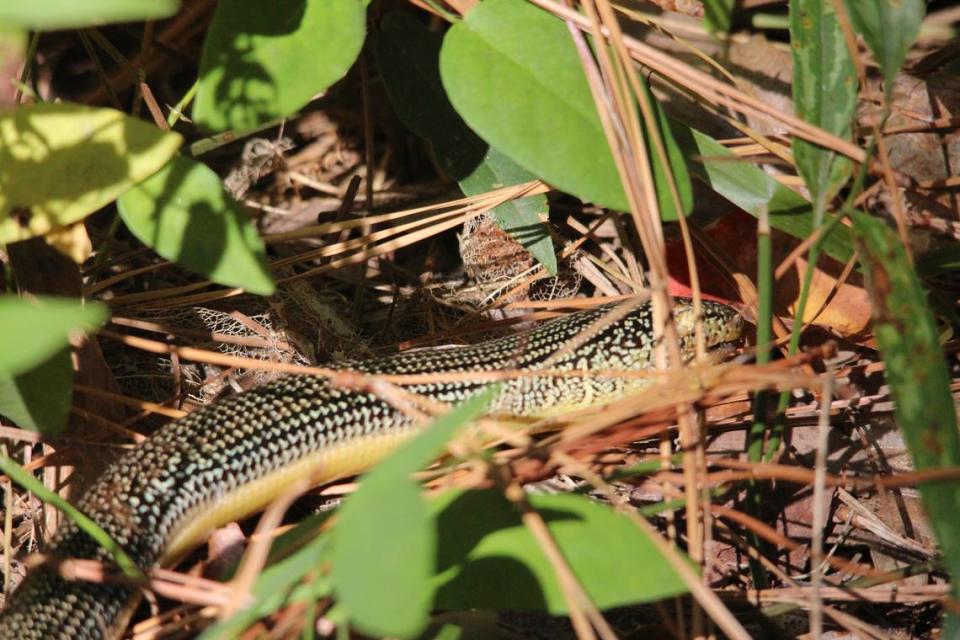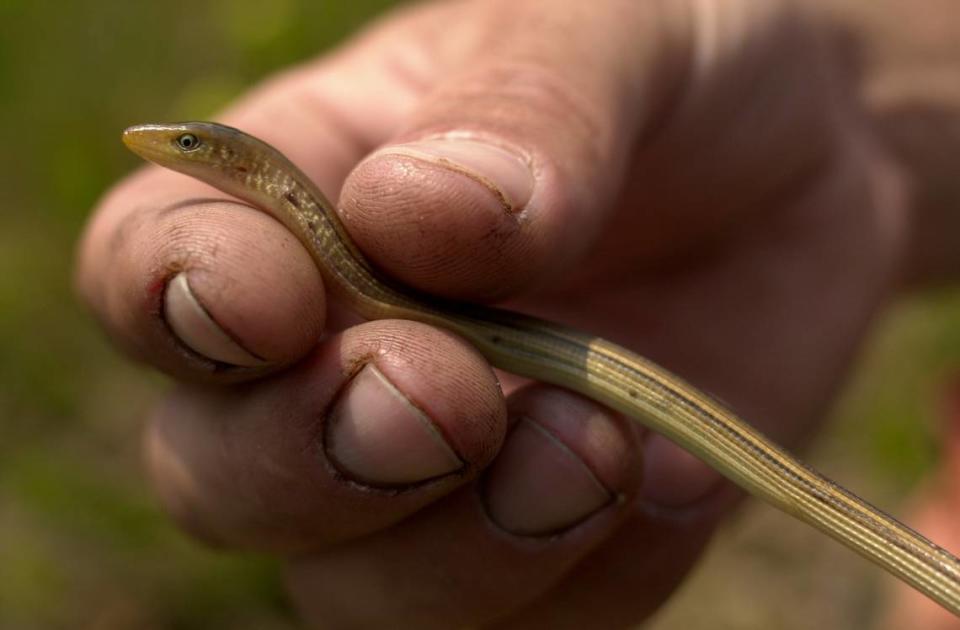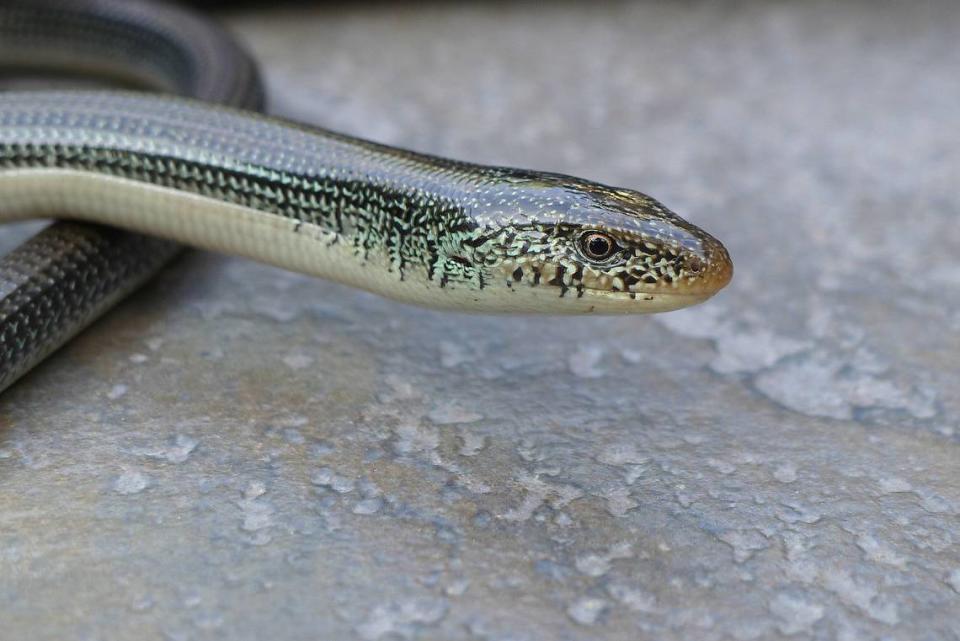Is that a snake or one of NC’s three legless lizards? Here’s how to tell
That long, scaly thing slithering on the ground is probably a snake. But there’s a chance it’s not.
North Carolina is home to three kinds of legless lizards, also called glass lizards, which look remarkably similar to snakes: the Eastern glass lizard, the slender glass lizard and the mimic glass lizard.
The News & Observer spoke with local wildlife experts to learn about these reptiles — where they live, what they eat, what eats them and more — plus, how to distinguish them from snakes.
Why are legless lizards called glass lizards?
Similar to other lizards native to North Carolina, the tails of glass lizards are easily broken off — just as glass easily shatters. If a predator latches onto the tail, it will snap off and thrash around, perhaps keeping the predator occupied and giving the lizard some time to escape.
While the tails do grow back, they won’t be as long as before, and the flesh is a different color. It’s uncommon to find a glass lizard with the original tail still intact, said Jeff Beane, the collections manager for herpetology at the North Carolina Museum of Natural Sciences.

Where in North Carolina do glass lizards live?
The glass lizard most likely to be found in the Triangle is the slender glass lizard. The mimic glass lizard is rare.
The lizards often prefer to be around bodies of water, but they’re found throughout the coastal plain.
“Mostly you’re going to find them basically hiding away from being noticed by bigger animals,” said Falyn Owens, an extension biologist for the North Carolina Wildlife Resources Commission. “So as with a lot of reptiles and amphibians, mostly you’re not going to find them at all unless you’re moving around the dirt, digging around, turning logs or rocks over to see what’s underneath.”
Two Eastern glass lizards are on display at the North Carolina Museum of Natural Sciences. Rachel Myers, the museum’s curator of reptiles and amphibians, said the best bet for seeing them is during the morning, when they’re most active.

How to tell a glass lizard from a snake
There are several physical characteristics that differentiate snakes and legless lizards:
Glass lizards in North Carolina have ear openings on the sides of their heads, but snakes don’t. Instead, snakes typically listen through vibrations in the ground.
Glass lizards have eyelids and can blink, but snakes have immovable, transparent scales and can’t blink.
Snakes can unhinge their jaws to swallow large prey, but glass lizards can’t.
Osteoderms, which are bony plates, are in glass lizards’ scales and prevent their skin from expanding. Instead, they have a lateral groove or fold along glass lizards’ side that allows their body to expand, such as when they have a large meal. This is different from snakes, which have skin that can expand.
We’re not recommending picking up the next slithering thing you see. But, if one were to pick up a glass lizard, one would feel that the reptile is rigid and inflexible, unlike snakes.
If you looked at a snake’s belly, you’d see transverse scutes, or scales, going across the body. Glass lizards have small scales on their undersides.
The tails of glass lizards are relatively larger than snakes’ tails. In glass lizards, the tail can be up to three quarters of their body length.
The slender glass lizard, which is usually tan or brown with long stripes along the length of its body, can grow as large as 42 inches long, and that would be a very large example, Owens said. Typically, these lizards are more like one or two feet long.

Are legless lizards dangerous to people or pets?
No, they will not harm people or pets.
Why are there legless lizards?
Snakes evolved from lizards, Beane said, because over time, some lizards adopted a lifestyle that didn’t require legs. Similarly, there are snakes with tiny limbs that they hardly ever use.
“If you don’t use something, in evolution, you lose it,” Beane said.
Diet of glass lizards
Legless lizards mostly eat insects such as grasshoppers, crickets , earthworms and spiders. They also consume snails, other lizards and small vertebrates such as newborn mice.
“They can’t open their mouth very wide, so it’s got to be something that’s small enough that they can swallow,” Owens said.
Predators of legless lizards
These reptiles are prey for many animals:
Snakes, including the Eastern kingsnake
Hawks
Opossums
Raccoons
“Just about anything that’s hungry will eat them,” Beane said.
‘Snake’ on Outer Banks is actually legless lizard with detachable tail, experts say
911 caller reports alien spaceship in Durham. ‘Most likely cicadas,’ police say

